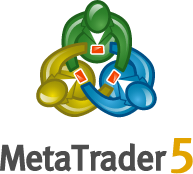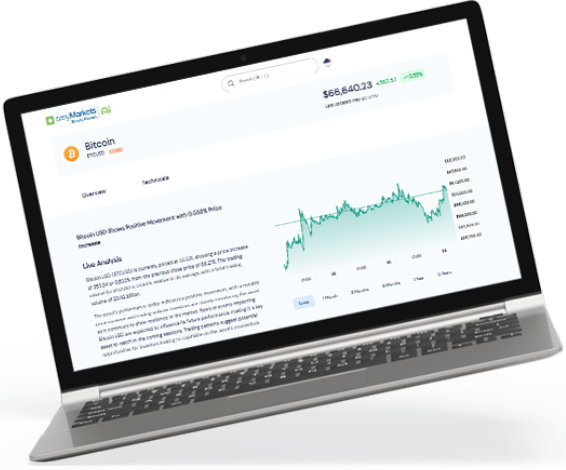Avoiding the Herd Mentality: Dogecoin Rally

Last time, we explored intentional Decision-Making in trading, emphasising how listening to your Heart, Head and Gut can guide you through shifting market trends—a useful approach when trends change rapidly, just like with our current topic: the Dogecoin Rally altcoin boom of 2024-2025.
What seemed like a sudden surge in early November 2024, sparked by a post on X from Elon Musk, saw Dogecoin (DOGE), the popular meme cryptocurrency, experience a remarkable 200% price increase in 1 month, reaching a peak of $0.46. This altcoin boom wasn’t short-lived, and as the crypto-friendly Republican candidate secured the U.S. presidential victory, investor confidence surged, propelling Dogecoin’s price to even greater heights.
The Dogecoin Rally is a classic example of Herd Mentality, where investors blindly follow social media momentum and market trends without risk assessment. The market’s swift movement makes it easy for traders to get caught up in the excitement.
This momentum didn’t stop in 2024—throughout January 2025, Dogecoin’s price has continued its upward trajectory, with many forecasting that this altcoin boom will continue growing. However, it’s vital to remember that true strength comes from independent decision-making. Despite sayings like ‘safety in numbers’, simply following the crowd is not advisable during such rallies. But what makes Herd Mentality on crypto trading platforms so dangerous?
What is Herd Mentality in trading?
When Herd Mentality takes hold, traders feel the pressure to conform, believing that if everyone else is making the same move, it must be the right choice. Unfortunately, this can lead to hasty decisions without careful evaluation – which is why influential figures like Elon Musk rely so heavily on it. Pressuring someone to act in a time-sensitive manner is key to bending their will to your own. With the Dogecoin Rally, many traders finding themselves swept up in the excitement, buying in at inflated prices due to the fear of missing out (FOMO), a classic symptom of Herd Mentality. Consequently, traders favour short-term price movements, despite questionable asset fundamentals or long-term consequences.
Any manipulator worth their salt will tell you about the importance of Herd Mentality. Perhaps no other cognitive fault is as important when influencing others’ behaviour as this. To see how this plays out in real-time, let’s examine the Dogecoin Rally—where market psychology, rather than intrinsic value, have become the primary driver of price movement.
Navigating the market
What started as a sudden spike has evolved into an altcoin boom driven by politics, social media, and widespread speculation. At the time of writing, the Dogecoin Rally continues to maintain its Herd Mentality induced momentum, keeping investors on edge and encouraging even more participation in the crypto market. But what exactly was the igniting spark that has fuelled this altcoin boom?
Understanding what powered the Dogecoin rally
The promethean X post
Following alleged behind the scenes conversations with the Republican presidential campaign, on the 20th of August 2024, a post on X from its owner, Elon Musk, who is a long-time supporter of Dogecoin, changed everything.

Elon Musk’s playful reference to the then fictional ‘Department of Government Efficiency’ (whose acronym spells D.O.G.E.), was a humorous yet genuine expression of his willingness to help the US government, tying it to Dogecoin, while offering his assistance to the concept of a new government initiative. Simultaneously, this post ignited a wave of excitement, drawing attention to Dogecoin in a way that only Elon Musk could. His endorsement added fuel to the fire, as the crypto community follows his every move closely.
Enter the Trump card
Subsequently, on November 12, 2024, following his victory, President Trump announced the creation of the Department, with Elon Musk appointed to lead. This development followed the President-elect's pledge on 5th September 2024 to ‘mak[e] America the world capital for crypto and Bitcoin’ at the Economic Club of New York.
When combined with his close relationship with Elon Musk, President Trump has become an extremely crypto-friendly political figure. As a result, following his victory, Dogecoin hit $0.46 on November 12th 2024, more than doubling its value.
January 2025
As we enter the first months of President Trump’s second term at the time of writing, the present is seen as a key moment for cryptocurrency trading. Elon Musk’s political involvement has additionally intensified excitement for those who trade Dogecoin, as it presents the possibility that DOGE could be linked to governmental projects. Analysts have even suggested that the Dogecoin rally could break through its current resistance levels.
Mastering the behaviour
Rather than being just one cognitive process, Herd Mentality is a mix of several psychological biases. At its core, Herd Mentality is driven by our desire to fit in and follow the crowd, sometimes sacrificing critical thinking in the process.
Key components of Herd Mentality
Social Proof:
People assume an action is correct if others are doing it.
Emotional Contagion:
Emotions like fear and greed spread through a group, influencing decisions.
Heuristics:
Mental shortcuts simplify decisions but often overlook important details.
Conformity Bias:
Pressure to follow the group to avoid standing out.
Loss Aversion and Groupthink:
Fear of losses and conflict drives FOMO (Fear of Missing Out).
Cognitive Load Reduction:
Simplifying decisions by following others instead of making independent choices.
Example of Herd Mentality in the Dogecoin Rally
The current Dogecoin Rally perfectly illustrates how Herd Mentality can shape trading decisions.
When Elon Musk published his X post on 20th August 2024, Social Proof kicked in. Traders saw others jumping in and assumed it was the right move, simply because the crowd was backing it. This Collective Validation made it easy to believe that joining the trend would lead to success.
Alongside this, Emotional Contagion spread quickly, with excitement and the fear of missing out (FOMO) driving more people to buy in. The energy of the market became contagious, pushing even hesitant traders to act. The more Dogecoin’s price rose, the harder it was to resist, as the collective enthusiasm built momentum.
As with many other instances in trading, you always get uniformed, amateur traders who generally open positions without specific intentions, hoping that they strike gold. The cryptocurrency market notoriously relies on this kind of Rule-of-Thumb trader. These traders rely on Heuristics, following the simple rule that if others are buying, the asset must be worth buying. The Dogecoin Rally was no different – in fact, given the particular demographic invested in Cryptocurrency, especially Dogecoin, largely due to its nature as a Memecoin – a disproportionate amount of joiners are likely Rule-of-Thumb Traders. This shortcut to decision-making prevented many from taking the time to properly analyse the cryptocurrency’s long-term potential, relying instead on the crowd’s actions as validation.
At the same time, Conformity Bias has kept many traders in line with the prevailing market sentiment. The idea of being left out or missing out on a profitable trend has become a driving force, even for those unsure about the asset’s true value.
Lastly, Loss Aversion played a role as traders are holding onto Dogecoin, doing what whatever it takes to avert a loss, as they are hoping the crypto will keep rising rather than risk taking a loss, even as warning signs of an unsustainable bubble might appear. This fear of missing potential profits has led many to overlook any potential mounting risks – a behaviour that closely mirrors the GameStop Short Squeeze of 2021.
The GameStop Short Squeeze (2021)
In January 2021, GameStop, a physical video game retailer facing significantly declining sales, became the centre of a market phenomenon that captured global attention. The company, already struggling due to a shift to digital and online retailers as well as pandemic-induced store closures and reduced in-person sales, found itself heavily targeted by institutional short-sellers who bet against its stock. The short-sellers believed GameStop’s stock would continue to decline, but they underestimated the power of other investors who saw an opportunity.
How Reddit, Elon Musk & social media fuelled the surge

Triggered by a community of traders on Reddit’s r/WallStreetBets, the stock price began to rise on January 13, when it jumped to $38.65 per share, up from around $17.25 at the start of January, resulting in a notable increase of over 120% in just a few days. This upward movement sparked a Short Squeeze - when short-sellers, who had borrowed and sold shares, were forced to buy them back as the price increased. However, the Short Squeeze wasn’t rooted in GameStop’s fundamentals but was instead driven by the Herd Mentality—traders collectively followed the rising trend without fully evaluating the underlying value of the asset.
As more traders jumped on the stock, driven by the growing momentum from social media platforms, including a tweet by Elon Musk on January 26, the stock price soared from $17 on January 4 to nearly $483 on January 28, a more than 2,700% increase. New information about the company’s prospects did not inform this surge once again, but rather on the collective behaviour of traders who were caught in a bandwagon effect. Traders rushed in, believing that if everyone else was buying, it must be the right decision. This is a classic example of Social Proof, where the actions of others influence individual decisions, pushing people to act based on the belief that the crowd knows something they do not.
The consequences of Herd Mentality
However, the rapid rise wasn’t without consequences. On January the 28th, when GameStop stock reached its peak, commission-free trading app Robinhood, which was responsible for around 50% of all buyers in the GameStop Short Squeeze, began facing significant liquidity issues, facing a $3.4 billion margin call to cover the astronomic amount of GameStop trades happening.
Once short-sellers covered their positions (bought back their stocks), traders began selling off their GameStop shares to lock in profits. FOMO (Fear of Missing Out) kept many in the trade long after the price had reached unsustainable levels. The fear of being left out of further gains outweighed any concern for risk management or fundamental analysis. As a result, fewer new buyers wanted to enter at such inflated prices. The herd, which had once driven the price up, now had nowhere to go but out.
As a result, GameStop’s stock quickly dropped to around $90 on February the 2nd and $61.8 on February the 10th, causing massive losses for investors who bought at the peak. Many who had followed the herd, hoping for quick profits, were left with substantial losses due to a nearly 81% loss in the share’s value when the price ultimately crashed. This extreme price fluctuation exposed the risks of reacting to Herd Mentality in the market, especially when driven by social influence rather than solid research or financial fundamentals.
In retrospect, the GameStop Short Squeeze can be seen as the perfect cautionary tale for the impact of Herd Mentality, as the cognitive bias caused a quick spike in price without strong value, leading to spectacular losses when it crashed.
Conquering the cognitive
As we've seen above, the collective movement of the crowd strongly influences the markets. GameStop would never have reached such astronomical heights if not for the so-called Herd – and influential figures like Elon Musk recognise this all too well, which is why he keeps prompting the crowds and pushing them in his desired direction so his desired assets can succeed: as he cannot do so on his own.
Unfortunately, Herd Mentality may benefit some, but it can also push traders toward poor decision-making when not managed correctly as in the GameStop fiasco. At its core, Herd Mentality weakens the trader’s resolve, pressuring them into making reactive choices – which is never a good idea in any context. Successful people can react to situations, but they do so thoughtfully and strategically: not impulsively. Driven by fear of missing out (FOMO) or the excitement of being part of something big, Herd traders find themselves buying at inflated prices and, just as quickly, suffering losses when the bubble bursts.
Practical tips to master Herd Mentality in trading
Trading can often feel like a game of following the crowd, mostly because in many ways and by its very nature, it is. However, true success comes from being able to think independently, especially when cognitive biases like Herd Mentality start to influence your decisions. Breaking free from the pull of the crowd is essential to making decisions that align with your long-term goals. But with an entire Dogecoin Rally and altcoin boom in motion, how do you resist?
Spend time with yourself
Take time to reflect on your own beliefs, values, and goals. This way, you can understand whether your actions are genuinely your own or if external pressure (or individuals) are influencing you. By regularly checking in with yourself, you build a stronger sense of self and a clearer foundation for making decisions that truly reflect your individual approach, not the crowd’s.
Think critically
Before making a decision, take a step back and look at the situation from all angles.
Ask yourself thoughtful questions:
- Does this align with my strategy?
- What are the risks involved?
This will help you process information from an objective point of view, ensuring that your choices are based on reason, not just the latest popular opinion.
Look for other points of view
Herd Mentality largely relies on Groupthink. As Orwellian as it sounds, this cognitive component is a very real threat to any trader. It’s vital to interact with a variety of viewpoints. Speak with people who make you question your assumptions – but in a positive way! Most certainly not a gas lighter, but someone who truly believes in their words and is not merely behaving in a performative manner, putting on a show for the benefit of the crowd. The easiest way of discerning this is by seeing if their actions align with their words.
If they have different experiences or perspectives and truly believe their words, they will help you see the bigger picture and guard you against blindly following the crowd.
Be comfortable with not knowing
When uncertain, following the crowd feels like the easiest option. This is why it’s important to be comfortable with uncertainty is key to making independent decisions. Recognize that it’s okay not to have all the answers. Sometimes, taking a pause to gather more information before jumping in is the best course of action. This gives you time and space to make decisions that are in line with your strategy, rather than reacting out of fear or impulse.
Build your confidence
Believing in your own judgement is the key to independent decision-making. The more trust you place in your ability to evaluate situations and make decisions, the less likely you’ll be swayed by external influences.
Confidence doesn’t mean being stubborn. It means you trust your instincts when the markets inevitably change and have the courage to make choices based on your own analysis - not the crowd’s. Strengthen your confidence, and you’ll feel empowered to stay the course even when pressured by others.
Winning wisdom wrap up
To maintain your independent, strategic decision-making during an altcoin boom, avoid the Herd Mentality. As the Dogecoin Rally unfolds, we can see just how easily emotions and group behaviour influences judgment.
When you feel like you’re becoming a part of the Herd:
Think critically
Remember your goals
Question popular trends
Look for other points of view
Become comfortable with uncertainty
Following these tips can help you truly break free from the crowd. Empower yourself to trust your judgment and make decisions based on solid analysis, not impulse.
Final thoughts
At the time of writing, Dogecoin remains a volatile asset currently priced at $0.3154, experiencing fluctuations amidst broader market rallies.
While it continues to lead the altcoin boom, outperforming assets like XRP and Solana, investor attention is shifting toward emerging cryptocurrencies, such as PropiChain (PCHAIN), hinting at a potential turning point.
The emotional influence of FOMO continues to push traders, despite growing caution due to Dogecoin's volatility – perhaps an indication of weak fundamentals. As the President begins his second term in office, we face a critical question: Will the Dogecoin Rally sustain its momentum with strong backing, or will alternative assets dominate the altcoin boom? Only time will tell if this rally is a Herd Mentality influenced fluke or if new contenders will take center stage.
Disclaimer:
Please note that the information provided in this article was accurate at the time of writing. Market conditions and economic data can change rapidly. This content is intended for informational purposes only and should not be used as the sole basis for making financial decisions.

Last time, we explored intentional Decision-Making in trading, emphasising how listening to your Heart, Head and Gut can guide you through shifting market trends—a useful approach when trends change rapidly, just like with our current topic: the Dogecoin Rally altcoin boom of 2024-2025.
What seemed like a sudden surge in early November 2024, sparked by a post on X from Elon Musk, saw Dogecoin (DOGE), the popular meme cryptocurrency, experience a remarkable 200% price increase in 1 month, reaching a peak of $0.46. This altcoin boom wasn’t short-lived, and as the crypto-friendly Republican candidate secured the U.S. presidential victory, investor confidence surged, propelling Dogecoin’s price to even greater heights.
The Dogecoin Rally is a classic example of Herd Mentality, where investors blindly follow social media momentum and market trends without risk assessment. The market’s swift movement makes it easy for traders to get caught up in the excitement.
This momentum didn’t stop in 2024—throughout January 2025, Dogecoin’s price has continued its upward trajectory, with many forecasting that this altcoin boom will continue growing. However, it’s vital to remember that true strength comes from independent decision-making. Despite sayings like ‘safety in numbers’, simply following the crowd is not advisable during such rallies. But what makes Herd Mentality on crypto trading platforms so dangerous?





















